
Good news everyone! Golf season is just around the corner. The weather is turning and it’s just about time to dust off those clubs and get to swinging. Now, it’s only been a few months since we got off the course, but in that time, it’s probably been tough to keep up with our winter golf conditioning programs and reduce our risk of getting any golf injuries.
We’ve sat at desks multiple hours a day, we’ve been watching tv, and getting back into our favorite sport could pose a risk for us to get golf injuries. This could cause us to miss our sunny golfing months due to pain. Well, today we are going to address 3 common golfing injuries and how to prevent them. So, let’s strap on those spikes and get to learning!
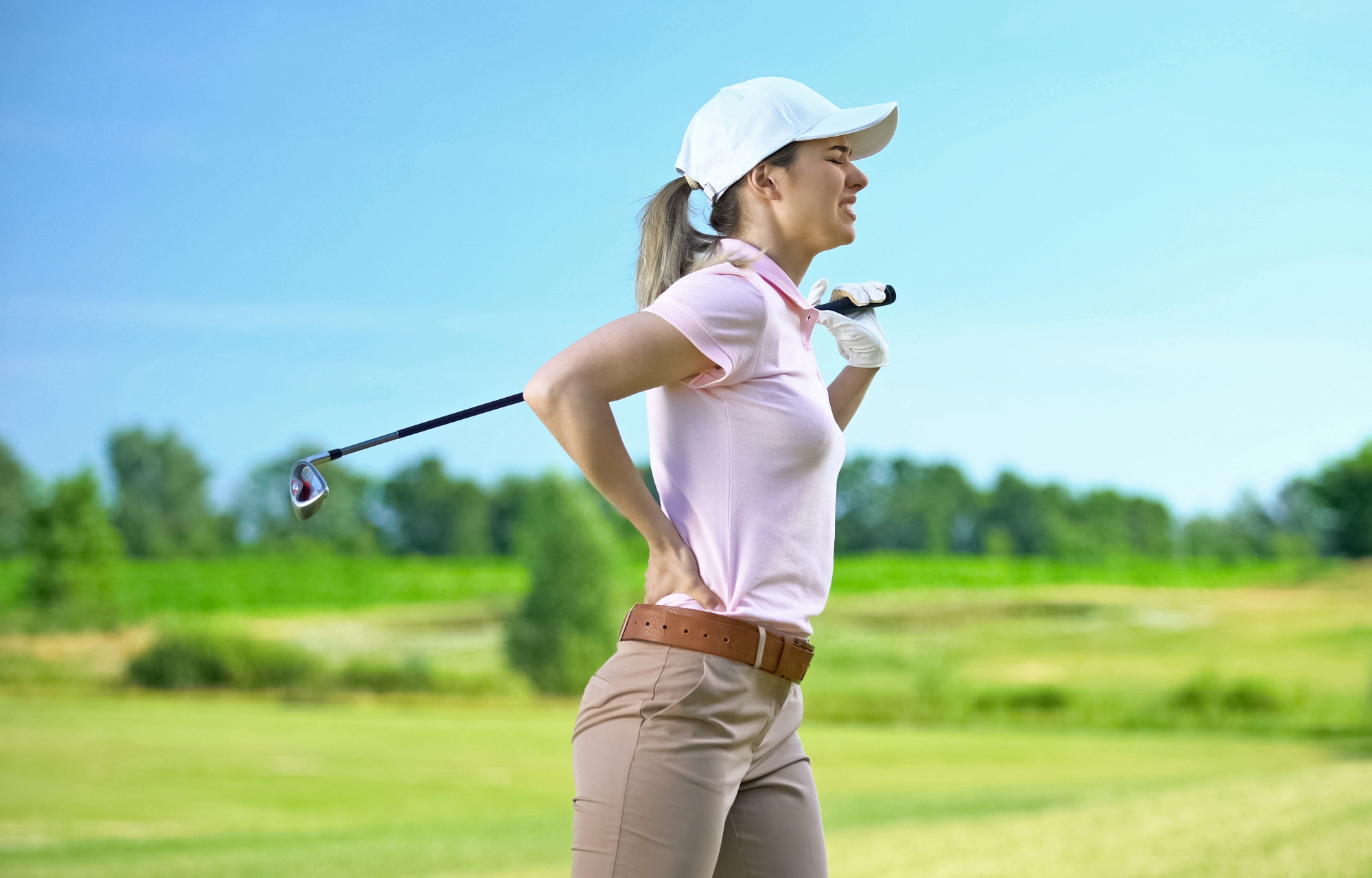
Non-Specific Low Back Pain
Low back pain is one of the most common causes of pain amongst the human population, and the most common golf injuries. For us golfers, we are at an increased risk due to the consistent rotation we put through our low backs during a round.
The golf swing consists of repetitive, consistent, asymmetrical movement. This movement causes shear, torsional and compressive forces on the lower parts of the back. There is a separation between the hips and the torso during a swing that can place excess pressure on the lumbar spine.
There is also increased hyperextension in the low back during the follow through that can place unwanted pressure on the discs in the low back and other connective tissues which cause pain! Evidence is limited that swing technique causes pain, but we do know that reduced range of motion in the hips and thoracic spine, along with reduced abdominal strength do put us at risk for low back pain and injury (Sugaya. et al)
In a recent study done, of 1634 golfers surveyed 17.6% of golfers sustained 1 injury in the previous year. 25% of those golf injuries were to the lumbar spine. Of golfers that experienced a lumbar spine injury, 64% reported it occurred over period of time. It was also reported that 77.2% of golfers reported having previous low back injury (Jadavien et al)
Fortunately, we have some conditioning techniques that can help us reduce risk for low back pain.
There is evidence to suggest that a hip joint exercise program can help reduce pain and improve performance in golfers with low back pain by increasing hip internal rotation range of motion on the lead hip joint. (Jang et al).
Evidence also suggests that abdominal stability exercises can be more efficient in reducing excessive stress on the bones in the lumbar vertebrae.
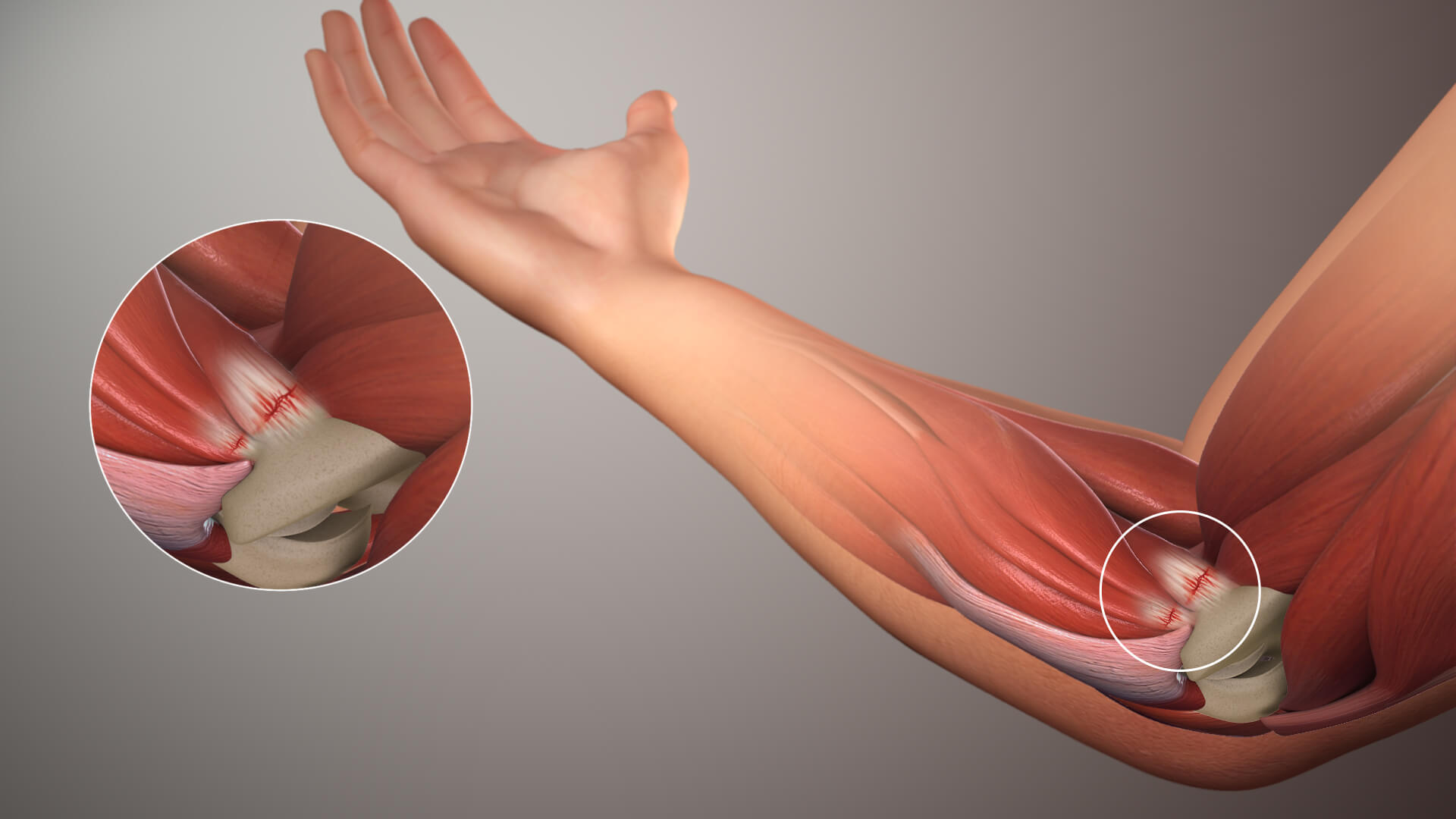
Golfer’s Elbow
Now, we have all heard a ton about ‘tennis elbow’, but what about golfer’s elbow’? Golfer’s elbow is pain that occurs on the inside, or medial, part of the elbow where the wrist flexor muscles attach to the bone. It is especially common amongst golfers, due to the repeated exposure to vibration that hitting a golf ball causes.
The highest prevalence of golfer’s elbow occurs in people between the ages of 45 and 64. (shiri et al). Risk factors for elbow pain include reduced forearm strength, poor shoulder strength, improper swinging technique and poor flexibility in the wrists, shoulders or mid spine.
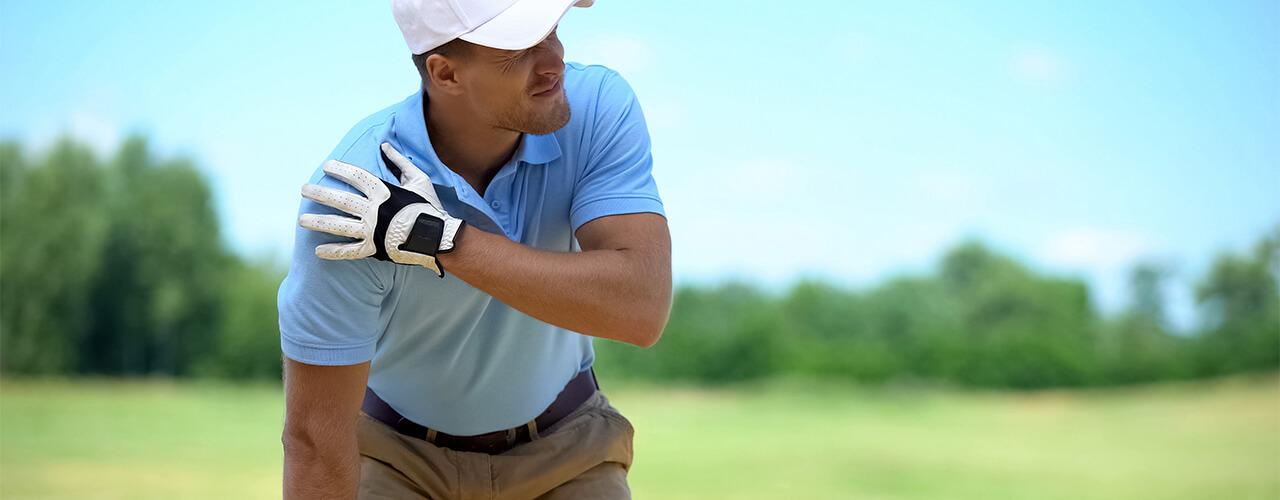
Rotator Cuff Tendon Type Shoulder Pain
Rotator cuff tendon pain is very common amongst repeat shoulder use athletes. There has been evidence showing a 12% incidence in shoulder pain in amateur golfers (Mchardy et al). But what is rotator cuff tendon pain?
Our rotator cuff consists of a group of four muscles in our shoulder that help control and create stability for the shoulder joint. Most shoulder injuries are due to overuse and related to mechanics of the shoulder during the swing. The cross-arm position during the back swing and follow through can put excess pressure on tendons in the shoulder.
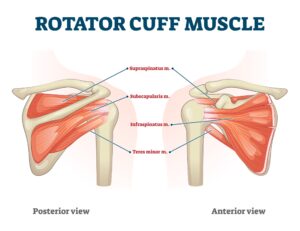
If weakness or loss of range is present in the shoulder, the tendons (tissue that connects muscles to bones), can become increasingly irritated and result in pain. These golf injuries can take multiple months to recover from and then our golf season could be over!
There are a few risk factors specific to golfers that can cause shoulder pain.
Amount of time playing golf (> 4 hours/week) was considered a risk factor to tendon pain in golfers usually in the non-dominant shoulder (lee et al).
Poor shoulder blade to shoulder communication also increases risk of future shoulder pain and should be considered a risk factor. In a study of 419 athletes, of athletes with poor shoulder blade strength, 35% of them experienced shoulder pain during a 1-year follow-up.
However, there is evidence to suggest that conservative management of rotator cuff tears with stretching and strengthening will improve general health and physical function (Goldberg et al). There is also evidence to suggest that physical therapy strengthening and mobility can be as effective in treating rotator cuff tears as surgical intervention (Kukkonen et al).
Performance Conditioning and Preventative exercises
So, we’ve discussed 3 of the most common golf injuries and their risk factors, now what should we do about it? Below, listed with pictures, are some great exercises and mobility drills that can be used to help keep us out on the golf course consistently and pain free! Also, it should be noted, if you do start to feel pain in any of the previously listed areas, please consult a physical therapist to get an evaluation specific to you!
Stretches:

Piriformis stretch (low back)
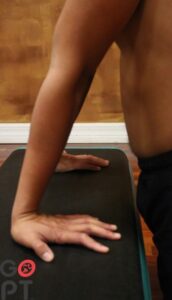
Wrist flexor stretch (wrist)
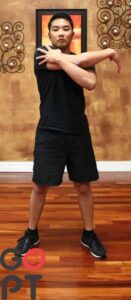

Posterior rotator cuff stretch/ pec stretch (shoulder/wrist)
2x/day for 45 seconds holds, daily
Strengthening Exercises:

Swiss ball plank (shoulder/ wrist)
3 sets of 30-45 seconds, 3-4x/week


Wrist grip pronation and supination (wrist)
3 sets of 15 repetitions, 3-4x/week
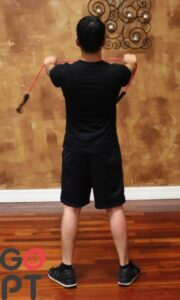
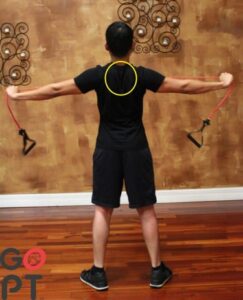
Shoulder Band Horizontal abduction (shoulder/wrist)
3 sets of 4-8 repetitions, 3-4x/week
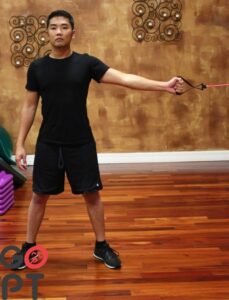

Standing band chest fly
3 sets of 8-12 repetitions, 2-3x/week
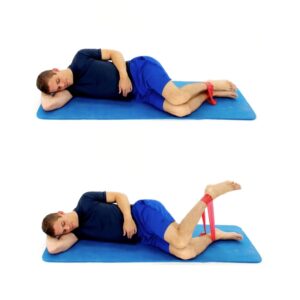
Reverse clamshell progression (low back pain)
1 set of 10 reps, 3x/week


Standing Pall-off press – The picture on the left is the correct form with good core engagement, the picture on the right is incorrect form with a disengaged core.
1 set of 12 reps, 3x/week
Citations
Amin, Nirav Kumar, Neil Schickendantz, Mark. (Medial Epicondylitis: Evaluation and Management. The Journal of the American Academy of Orthopaedic Surgeons. 23. 348 355. 10.5435/JAAOS D 14 00145.
Burdorf A, Van Der Steenhoven GA, Tromp Klaren EG. A one year prospective study on back pain among novice golfers. Am J Sports Med 1996;24(5):659 664. doi:10.1177/036354659602400516
Cho, Namjeong, Hwang, Sehwan. (The effect of interbody stabilization exercise using Swiss ball on the flexibility and golf performance of a beginner golfer. Korean Journal of Integrated Medicine, 4 (13 22.
Fritz JM, Beneciuk JM, George SZ. Relationship between categorization with the STarT Back screening tool and prognosis for people receiving physical therapy for low back pain. Phys Ther. 2011;91:722 732.
Go SU, Lee BH. Effects of scapular stability exercise on shoulder stability and rehabilitative ultrasound images in office workers. J Phys Ther Sci 2016;28(11):2999 3002. doi:10.1589/jpts.28.2999
Andrew Wilson, DPT

This post was written by Dr. Andrew Wilson in May of 2021. Andrew is Level 1 TPI certified and an avid golfer himself.
Learn more about Andrew on our about page: https://gopt.co/about/